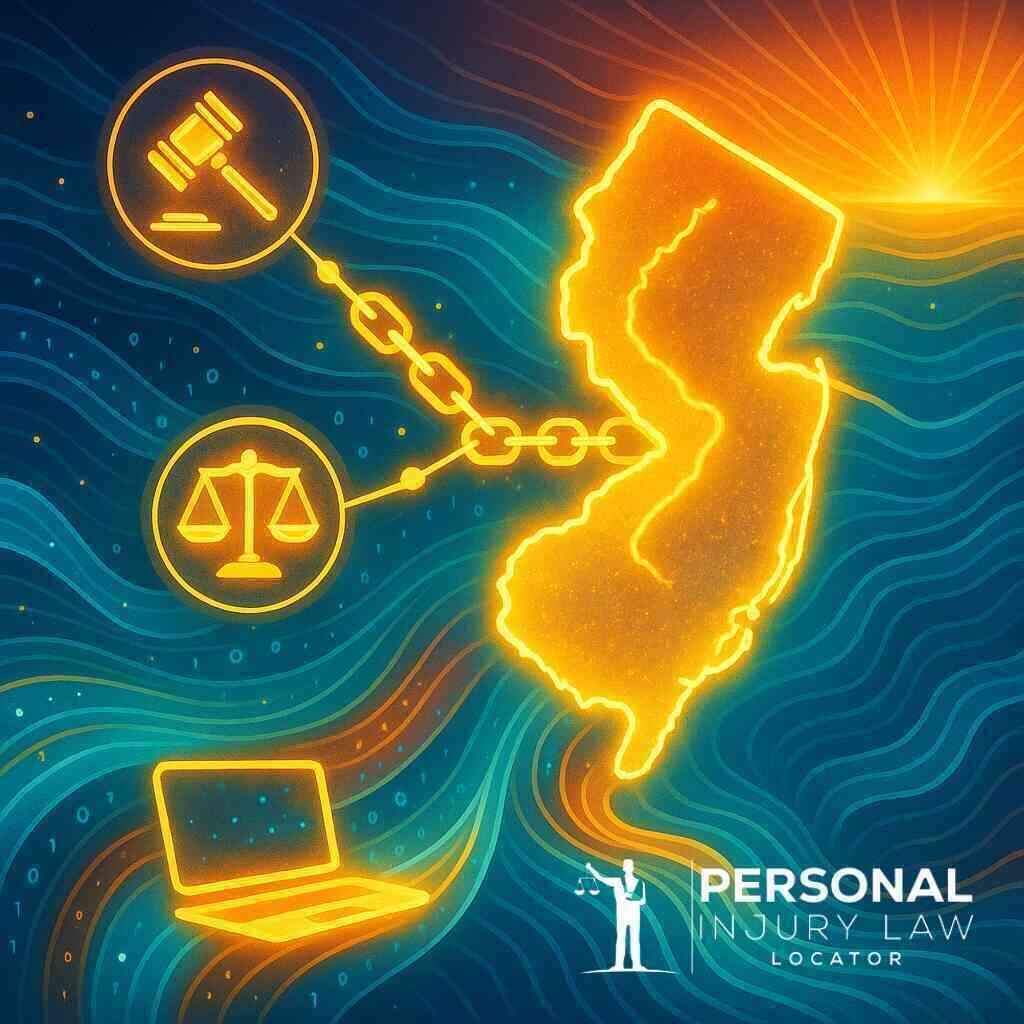 Posted On: 11/24/2025
Posted On: 11/24/2025Opening Minds: The Legal Terrain of Emotional Distress From Coast to Coast
Why Emotional Distress Matters to Personal Injury Law Locator
Victims often discover that emotional distress damages eclipse visible bruises in both value and complexity. Sleepless nights, anxiety attacks, and PTSD after motor vehicle accidents can linger long after bones mend. At Personal Injury Law Locator, we center those invisible scars in every personal injury claim we facilitate. Our platform delivers a swift path to compassionate counsel who thoroughly understands mental anguish theories. A single click on the nationwide emotional distress law locator link unlocks seasoned representation across all fifty states. That nationwide reach matters whenever powerful insurance companies question an injured person’s psychological suffering.
Emotional trauma rarely respects state lines, yet statutes and caps differ wildly. Personal Injury Law Locator therefore maintains a living database of courtroom trends and verdict analytics to keep clients informed. Claimants considering a personal injury lawsuit can preview regional patterns before choosing legal representation. Our interactive all fifty state injury laws guide summarizes deadlines, burden shifts, and non-economic caps. By arming claimants early, we shrink the power gap with large insurance companies. The result is smarter settlement positioning and faster relief from crushing medical bills.
The Evolution from Impact Rule to Modern Doctrine
Early courts demanded a physical blow before recognizing mental harm, a doctrine known as the impact rule. Florida long championed that approach, complicating negligent infliction of emotional distress state variations for decades. Plaintiffs without broken bones still woke with nightmares and panic disorders, yet could not sue. Modern Florida precedent softens the rule, but strategic pleading remains vital. Our impact rule guidance on claims in Florida resources explains which facts trigger judicial sympathy. Understanding that history ensures your legal team cites the correct persuasive authorities.
Other jurisdictions adopted the zone of danger doctrine instead. New York illustrates the shift by allowing recovery when plaintiffs legitimately feared immediate bodily harm. The rule balances foreseeability with fairness toward defendants, creating a nuanced standard. Litigants must still provide credible expert testimony linking fright to diagnosable conditions. The curated list of zone of danger attorneys in New York helps victims frame allegations precisely. Mastery of evolving doctrines differentiates an ordinary law firm from a powerhouse advocate.
Interplay of Physical Injury and Mental Anguish in Civil Lawsuits
Economic and non-economic heads of loss intersect once emotional distress joins physical injuries in a single complaint. Courts quantify pain through jury instructions, precedent charts, and multiplier formulas that refine settlement ranges. Although no statute prints exact numbers, recognizable patterns emerge in verdict databases nationwide. For foundational context, examine how courts define compensable harm under legal damages explained. This framework informs negotiations with any insurance adjuster resisting a fair pain and suffering valuation. Armed with data, plaintiffs push back against lowball offers covering only property damage.
Liability still anchors every award, making negligence analysis unavoidable for emotional distress victims. Attorneys must prove duty, breach, causation, and proximate mental injury beyond speculation. The classic negligence elements in emotional harm outline supplies that logical roadmap for courts and juries. Medical professionals and treating therapists then cement causation through objective observations and diagnostic tools. Personal injury lawyers leverage those records to demand compensation for therapy, medications, and lost career opportunities. That synergy between law and medicine strengthens civil cases in settlement conferences and trials alike.
Snapshot of State by State Divergence
California embraces liberal recovery rules yet imposes strict proof-of-severity standards for mental anguish. Residents suffering car accidents or workplace harassment often seek specialized counsel promptly to meet tight procedural demands. Our directory lists vetted personal injury lawyers in California for mental anguish who navigate local jury attitudes expertly. They understand Proposition 51’s comparative fault landscape and recent appellate shifts redefining emotional harm thresholds. Without that edge, an injured party may see pain and suffering calculators undervalue intangible losses. The same facts can yield drastically different verdicts just across the Nevada border.
Regional variance demands multistate intelligence whenever defendants operate nationwide. Trucking companies, for instance, face lawsuits where accidents occur and where corporate headquarters sit, creating forum-shopping opportunities. The latest multi state emotional distress strategies article compares venue options, statutes, and damage caps for strategic decisions. Personal Injury Law Locator synthesizes that intel into actionable checklists for attorneys preparing a cause of action. By spotting favorable forums early, claimants can leverage punitive damages potential or avoid restrictive non-economic caps. Knowledge becomes leverage long before the formal civil lawsuit process for distress even starts.

The Fifty State Labyrinth: Dissecting Rules Caps and Deadlines
Impact Rule States and the Zone of Danger Exception
Victims in impact rule states face a higher barricade when claiming emotional distress damages. Courts still insist on some physical injury, even when negligent infliction of emotional distress state variations show the mind suffers first. Florida remains the prime example, yet nuanced exceptions now permit recovery with proper pleading. Our Florida emotional claims FAQ resource unpacks those carve-outs so an injured party can avoid procedural landmines. By mastering that guidance, a claimant transforms an old-fashioned barrier into a negotiable hurdle during settlement talks.
The zone of danger doctrine offers relief where the impact rule falters. Plaintiffs recover when they reasonably fear imminent bodily harm, even if contact never occurred. That standard dominates jurisdictions like New York and Pennsylvania, narrowing defense arguments about foreseeability. Lawyers must document the plaintiff’s proximity, the threat’s immediacy, and subsequent PTSD after a motor vehicle accident. Robust evidence will convince insurers that mental anguish meets every statutory threshold.
Intentional versus Negligent Infliction: Charting the Burden of Proof
Intentional infliction of emotional distress lawsuits demand proof of outrageous conduct far beyond normal negligence. Plaintiffs must illustrate extreme behavior, intent, or reckless disregard, plus severe psychological injury verified by medical professionals. Negligent claims relax those burdens but still require duty, breach, and foreseeability that harm would follow. The personal injury tort background framework explains how these twin pathways evolved under American common law. Referencing that history helps legal teams choose the strongest cause of action for each jurisdiction.
Expert testimony divides winning files from courtroom disappointments. Psychiatrists translate panic attacks, insomnia, and depression into DSM-5 diagnoses that juries understand. Their opinions must tie symptoms directly to the defendant’s act or omission. Experienced personal injury attorneys extend that chain through employment records, therapy invoices, and prescription logs. Combining technical rigor with human storytelling persuades even skeptical triers of fact.
Bystander Claims and the Ripple Effect on Wrongful Death
Several states recognize bystander emotional distress claims when someone witnesses a loved one’s catastrophic injury. Grief impacts productivity, personal relationships, and future earning power, yet insurers undervalue such losses. Alabama courts allow survivors to seek supplemental relief, making wrongful death grief claims in Alabama a pivotal precedent. Plaintiffs must show close familial ties, sensory perception of the event, and clinically verified trauma. Fulfilled criteria can enlarge settlement pools appreciably.
Ripple effects extend into wrongful death suits where emotional harm often surpasses all economic losses combined. Jury instructions frequently separate grief compensation from funeral expenses or lost income. Defense counsel aims to cap those numbers by challenging causation or alleging pre-existing conditions. Early collection of therapy notes and family-member affidavits defeats those tactics. Thorough preparation turns intangible sorrow into measurable damages.
Tort Reform and Non Economic Damage Caps
Lobbyists have pressed legislatures to curb verdict volatility, resulting in complex cap statutes. Texas, for instance, limits non-economic awards in medical malpractice yet leaves motor vehicle accident claims more open. Dedicated damage caps counsel in Texas parse each statute, ensuring no cap erroneously applies. They also spotlight constitutional challenges that could unlock higher awards when caps infringe due-process protections.
Washington retains no general cap but imposes evidentiary hurdles for mental anguish compensation caps. Recent appellate opinions scrutinize expert methodologies for calculating PTSD severity. Our curated Washington non economic damages insights reveal how juries respond to those new tests. Understanding the local climate guides plaintiffs when to settle or push for trial. Tactical timing maximizes overall recovery.
Comparative Negligence and Mental Harm Allocation
States that follow comparative negligence allocate emotional distress damages proportionally with fault. Illinois applies a modified model, barring recovery when plaintiffs exceed fifty percent responsibility. Attorneys use comparative negligence insight in Illinois to forecast settlement ranges. That data assists in structuring mediation offers that reflect realistic jury outcomes. Solid preparation prevents a client from being blindsided by fault apportionment reductions.
Courts examine whether emotional trauma stems from the accident itself or from litigation stress. Defense counsel argues that post-accident depression partially arises from personal choices, reducing liability share. Plaintiffs rebut using contemporaneous therapy notes that pre-date any courtroom appearance. Documented timelines often neutralize comparative claims, preserving a higher percentage of the award for the injured person.
Statute of Limitations and Choice of Law Traps
Filing deadlines differ wildly, ranging from one to six years for emotional trauma claims. Missed cutoffs eliminate cases regardless of merit. When accidents cross borders, choice-of-law analysis decides which clock controls. The civil lawsuit process for distress resource outlines tolling doctrines, borrowing statutes, and equitable estoppel arguments. Mastery of these nuances safeguards claims against procedural dismissal.
Forum selection clauses in employment contracts may also dictate venue. Plaintiffs must challenge unconscionable provisions early or risk permanent transfer to unfavorable jurisdictions. A strategic early motion can nullify oppressive clauses and keep the dispute local. Awareness of such traps marks the difference between full compensation and legal defeat. Timely consultation with specialized counsel is essential.
Tactical Evidence Medical Records Expert Testimony and Pain Calculators
Convincing an adjuster starts with meticulous medical records that chronicle every anxiety attack, therapy session, and prescription change. Attorneys convert that data into values using recognized pain and suffering calculation overview multipliers. Accurate calculations prevent lowball offers that ignore future counseling costs. Presenting spreadsheets alongside narrative statements resonates with analytical adjusters and empathetic jurors alike.
In paralysis cases or severe crashes, complex PTSD emerges, demanding specialized proof. Survivors reviewing PTSD lawsuits help in Vermont discover tailored templates for DSM documentation, vocational assessments, and life-care plans. Such evidence defuses insurer skepticism about psychological permanence. Modern software integrates these metrics into interactive exhibits, enhancing jury comprehension. Effective visualization often shortcuts the trial entirely.
Insurance Adjuster Tactics and Multistate Settlement Strategies
Adjusters typically delay or fragment negotiations, hoping that statutes of limitation will expire or exhaustion will set in. They question causation by citing inconsistent therapy attendance or prior stressors. Plaintiffs counter with synchronized records from multiple states, showing continuous treatment. Knowledge of emotional distress litigation in Washington state equips counsel to threaten punitive exposure where bad-faith conduct persists. That leverage speeds up multistate settlement conferences.
When defendants operate nationwide, policy limits and choice-of-law variances become strategic levers. Counsel may bifurcate claims, settling property damage locally and pressing emotional components elsewhere. Coordinated filings prevent insurers from playing one jurisdiction against another. Seasoned negotiators also time mediator selections to coincide with favorable appellate trends. Such orchestration maximizes aggregate recovery.
Role of Personal Injury Law Locator in Assembling a Cross Border Legal Team
Complex emotional distress cases often require collaborative teams spanning psychiatry, accident reconstruction, and vocational economics. Our directory links specialists in every state, streamlining consultations within hours. The recently published in depth Vermont emotional distress review exemplifies the platform’s granular jurisdictional knowledge. Clients leverage those insights to vet attorneys who already understand local judges and jury tendencies. Swift access to that network compresses the legal process timeline.
Personal Injury Law Locator further harmonizes contingency agreements, ensuring attorney fees remain transparent despite multiple jurisdictions. Centralized document portals allow seamless sharing of deposition transcripts, medical imaging, and expert reports. That integration eliminates duplication and costly courier delays. By aligning multidisciplinary teams under one digital roof, the platform empowers injured parties against sprawling insurance companies. Strategic unity converts fragmented claims into a cohesive, persuasive narrative.

Navigating Forward Crafting Winning Emotional Distress Cases Across Jurisdictions
Building the Narrative for PTSD After Car Accidents or Workplace Harassment
Car accident mental anguish claims often start with a frantic 911 call and end with sleepless nights. Attorneys gather proving emotional distress medical records that document flashbacks, medication changes, and lost wages. Next, expert testimony psychological injury specialists translate those symptoms into DSM-5 language that jurors trust. Consistent therapy logs rebut insurance adjuster emotional distress claim excuses about exaggeration or malingering. This meticulous paper trail anchors settlement negotiations before the trial begins.
Storytelling also matters when workplace harassment emotional distress haunts every shift. Workers can show negligent infliction of emotional distress state variations by comparing hostile messages, HR reports, and escalating panic attacks. Impact rule states may still require some physical manifestation, such as stress-induced migraines, so counsel highlights medical visits. Pain and suffering calculators then convert intangible agony into measurable numbers that insurers understand. Finally, the narrative links PTSD after motor vehicle accident principles to any hostile-work-environment fact pattern, reinforcing causation.
Leveraging Federal Diversity Jurisdiction When States Clash
Multi-state personal injury lawsuit planning often encounters conflicting filing deadlines or mental anguish compensation caps. Federal diversity jurisdiction emotional claims allow plaintiffs to bypass restrictive local courts when defendants reside elsewhere. Jurisdictional strategy also prevents forum shopping by defendants seeking no-fault state emotional distress shields. Once in federal court, uniform procedural rules streamline discovery on bystander emotional distress claims and punitive damages emotional harm evidence. Moreover, nationwide subpoenas help secure witnesses who might evade state process servers.
Counsel still honors Erie doctrine constraints, applying substantive state tort reform emotional distress statutes while leveraging federal procedural advantages. Early motions in limine ask judges to exclude unfair state cap defenses. Simultaneously, plaintiffs spotlight public-policy arguments showing how intentional infliction of emotional distress lawsuit facts deserve uncapped justice. This dual approach maximizes leverage during mediation and at trial.
Punitive Damages and Strategic Venue Selection
Punitive awards punish reckless conduct and deter future wrongdoing. Some jurisdictions require clear and convincing proof, while others demand only gross negligence. Lawyers compare state-level mental anguish compensation caps to pinpoint venues where punitive damages and emotional harm remain fully available. When defendants operate trucks across borders, the venue can shift the ceiling from six figures to seven. Strategic filing therefore becomes as valuable as any single witness.
Attorneys also assess jury demographics and recent verdict trends. Urban jurors may empathize differently with nursing home abuse emotional trauma than rural panels. Defense counsel will argue non-economic damages limitations should curtail runaway verdicts. Plaintiffs counter with expert testimony on corporate profit motives, emphasizing how monetary punishment protects community safety. The resulting tension often nudges insurers toward significant settlements.
From Nursing Home Abuse to Truck Wrecks: Tailoring Claims to Each State
Every type of injury demands jurisdiction-specific framing. In elder-care cases, attorneys document bedsores, medication errors, and emotional isolation to establish intentional or reckless abuse. Even the impact rule states recognize bodily deterioration as sufficient contact, unlocking recovery for accompanying depression. Conversely, truck wreck plaintiffs emphasize the zone of danger doctrine proximity, showing they feared death as metal crumpled inches away. That fear alone supports damages, even if no broken bones occurred.
State tort reform emotional distress statutes sometimes cap awards in medical malpractice but not in roadway collisions. Savvy practitioners therefore separate medical treatment negligence from the motor vehicle accident portion of a claim. They may file parallel actions or plead alternative theories, preserving maximum recovery. Meanwhile, no-fault state emotional distress restrictions require crossing monetary thresholds before litigation. Detailed repair invoices and therapy bills help meet those prerequisites, ensuring the civil lawsuit progresses.
Final Call Connecting With a Personal Injury Attorney Near You
Navigating emotional distress law across fifty jurisdictions is daunting without guidance. A seasoned personal injury attorney near you understands local judges, juries, and filing quirks. That insight proves invaluable when calculating wrongful death, emotional damages or challenging state caps. Personal Injury Law Locator instantly matches injured parties with vetted counsel who excel at complex psychological injury claims. From initial intake to settlement, the platform coordinates experts, shares documents, and tracks attorney fees transparently.
Time matters because statutory clocks tick relentlessly. Reach out today to secure legal representation before evidence fades or deadlines pass. With the right legal team, your emotional trauma transforms from silent suffering into a compelling cause of action. Courts then recognize every panic attack, therapy session, and lost dream, delivering the justice you deserve. Let Personal Injury Law Locator light that path forward.
Frequently Asked Questions
Question: How can Personal Injury Law Locator help me navigate different impact rule states and zone of danger doctrines when I’m seeking emotional distress damages?
Answer: Our nationwide network instantly matches you with a personal injury lawyer who already knows the local rules that control negligent or intentional infliction of emotional distress. In impact rule states like Florida we’ll pair you with counsel who can highlight any accompanying physical injury, while in zone of danger jurisdictions such as New York we connect you to attorneys skilled at proving the plaintiff’s reasonable fear of imminent harm. Because Personal Injury Law Locator tracks non-economic damages limitations, comparative negligence emotional harm rules, and recent verdict data in every venue, your legal team can file the strongest personal injury claim without wasting time on research that an out-of-state lawyer might miss.
Question: I read your blog Comparing Emotional Distress Claims Across States; how do pain and suffering calculators differ when a multi-state personal injury lawsuit involves both physical injuries and PTSD after a motor vehicle accident?
Answer: Pain and suffering calculators change with the forum. Some courts apply multipliers to medical bills, others rely on per-diem formulas. When a truck wreck or car accident crosses state lines, our platform’s verdict analytics reveal how each jurisdiction values PTSD, anxiety, and lost enjoyment of life. Your Personal Injury Law Locator attorney will run the numbers for every viable venue, consider punitive damages, emotional harm potential, and then negotiate with the insurance company from the highest valuation point. That data-driven approach frequently moves settlement offers from five to six figures without ever entering a courtroom.
Question: What evidence do I need to prove negligent infliction of emotional distress in a no-fault state, and can Personal Injury Law Locator connect me with a personal injury attorney near you who specializes in that?
Answer: Even in a no-fault state you must show contemporaneous medical treatment, DSM-5 diagnoses, and expert testimony psychological injury that ties your panic attacks or insomnia directly to the accident. Proving emotional distress medical records-therapy notes, prescription logs, and vocational evaluations-creates the objective foundation insurers demand. With one click, Personal Injury Law Locator will introduce you to a local personal injury attorney experienced in overcoming no-fault thresholds so your civil lawsuit includes full compensation for mental anguish as well as property damage and medical bills.
Question: Do non-economic damages limitations and mental anguish compensation caps mean I should settle early, or can Personal Injury Law Locator still pursue punitive damages and emotional harm in my case?
Answer: Caps matter, but they’re not the end of the story. Some states exempt intentional infliction of emotional distress lawsuit claims from statutory ceilings, and others lift caps when the defendant acted with gross negligence or malice. Our attorneys analyze every cap, explore constitutional challenges, and evaluate whether federal diversity jurisdiction emotional claims could move the case to a more favorable venue. If punitive damages are on the table, we document the insurance adjuster’s bad-faith conduct, gather egregious safety-violation evidence, and push for a verdict that surpasses any initial cap-based offer.
Question: How soon must I file if I have bystander emotional distress claims, and how does the statute of limitations emotional trauma clock change across states?
Answer: Filing windows range from just one year in Louisiana to six years in Maine, and the clock can start on the date of the accident, the discovery of injury, or the death of a loved one in wrongful death emotional damages cases. Choice-of-law rules may also borrow the shorter of the two states’ limits. Personal Injury Law Locator’s attorneys perform a rapid fifty-state statute audit, identify tolling doctrines like minority or fraud concealment, and file your personal injury lawsuit before any deadline threatens your cause of action. Act fast-early consultation preserves evidence, protects your rights, and maximizes potential recovery.


